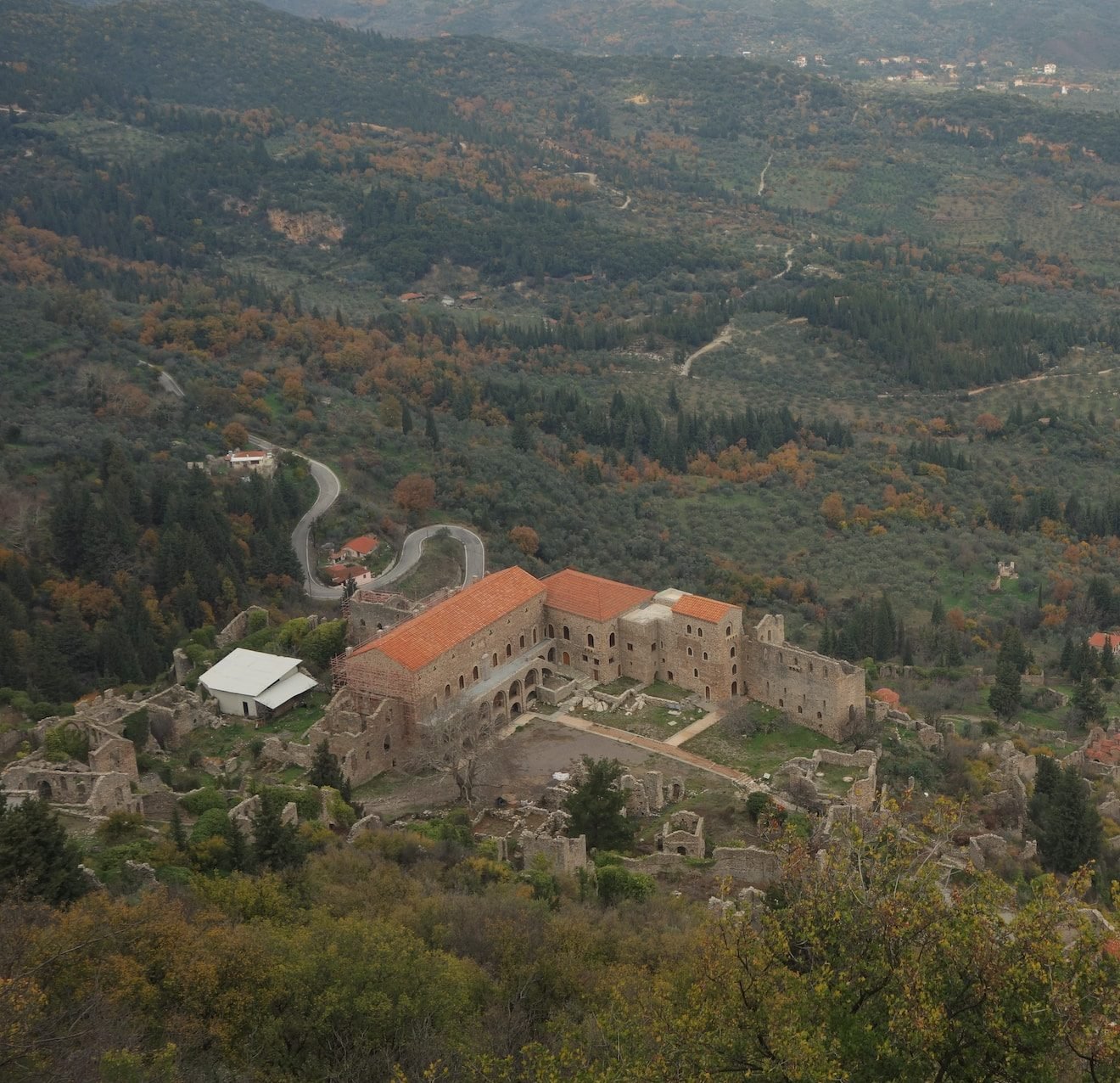The Archaeological Site of Mystra lies near Sparta, in the Peloponnese region of southern Greece. It sits on the slopes of Mount Taygetos and overlooks the fertile valley of the Eurotas River. This location once held great strategic and cultural importance. Eventually, Mystras became the capital of the Byzantine Despotate of the Morea and a major center of politics, art, and learning.
The site first emerged in 1249 when William II of Villehardouin built the fortress on the hill. Soon after, the Byzantines recaptured it and transformed it into a thriving town. Over time, scholars, nobles, and clergy settled there, creating a vibrant and influential community. By the 14th century, Mystras flourished as a regional capital. However, later invasions by the Ottomans and Venetians caused its decline.
Today, visitors can explore the remains of a well-preserved medieval city. The site divides into three main sections: the Upper Town, the Lower Town, and the hilltop fortress. In the Upper Town, the Palace of the Despots rises above the ruins. This large complex housed rulers and served as the administrative heart of Mystras.
Moving down to the Lower Town, travelers can find several other significant landmarks. The Monastery of Pantanassa still functions today and welcomes visitors. Nuns maintain the monastery, which features detailed frescoes and elegant design.
The Archaeological Museum of Mystras offers further insights into the site’s past. It displays items like pottery, coins, manuscripts, and religious icons. These exhibits help visitors understand the daily life and culture of the people who once lived there.
Planning a visit is simple. From April to October, the site stays open daily from 8:00 a.m. to 8:00 p.m. From November to March, it operates from 8:30 a.m. to 3:30 p.m. Standard admission costs €12, while students and seniors pay €6. Children under 18 enter for free. On certain days, such as the first Sunday of each month from November through March, admission is also free.
In conclusion, the Archaeological Site of Mystra combines natural beauty, historical depth, and architectural brilliance. Visitors can enjoy stunning views, explore impressive ruins, and connect with Greece’s Byzantine heritage.



Comment (0)